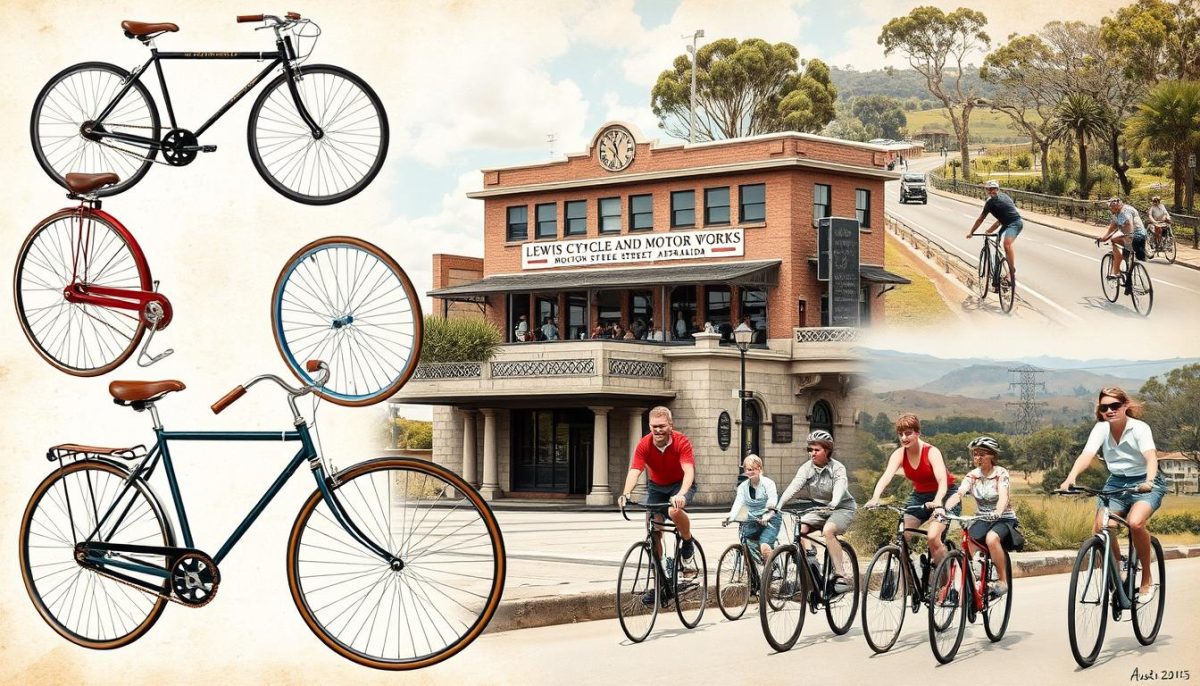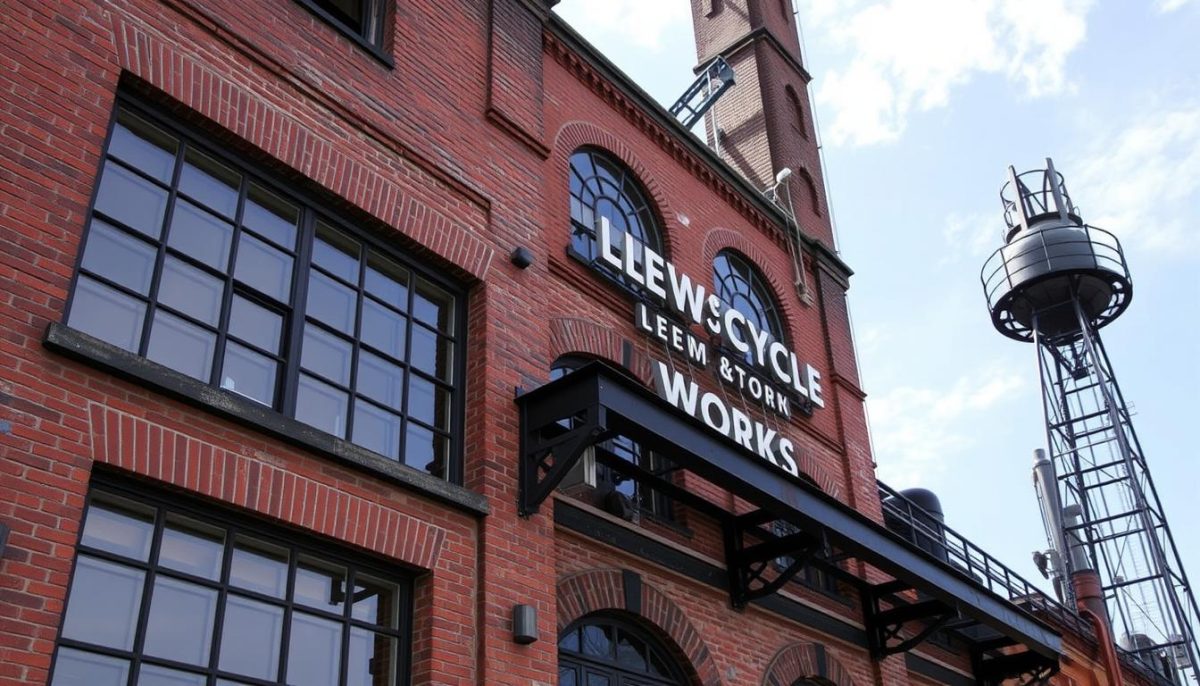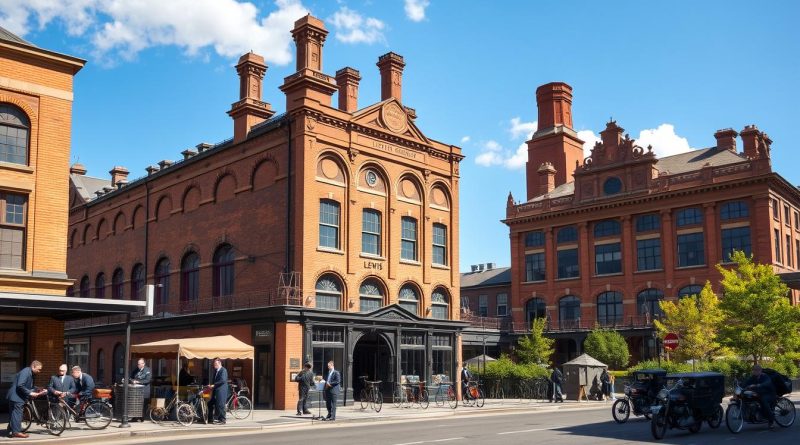Lewis Cycle and Motor Works factory, Molton Street, Adelaide
The Lewis Cycle and Motor Works factory, located on Molton Street in Adelaide, holds a remarkable place in the landscape of Australian manufacturing. This historical factory was instrumental in the bicycle industry during the late 1800s, which later evolved into a hub for motor vehicle engineering in the early 20th century. The factory not only highlights local craftsmanship but also showcases innovative engineering heritage that contributed to the growth of transport solutions across Australia.
As a pivotal establishment, the Lewis Cycle and Motor Works factory reflects the dynamic shifts within the region’s manufacturing sector and remains a celebrated symbol of Adelaide’s industrial history.
The Fascinating History of Lewis Cycle and Motor Works
The founding of Lewis Cycle and Motor Works in 1897 marked a significant milestone in the history of cycling in Australia. As one of the pioneering factories dedicated to bicycle manufacturing, it responded to the growing demand for bicycles during this vibrant period. The vision of its founders drove the early years of success, establishing a brand synonymous with quality and innovation.
Founding and Early Years
From its inception, Lewis Cycle and Motor Works utilized locally sourced materials, quickly gaining a reputation for producing high-quality bicycles. Historical documents reveal that the factory soon became one of the largest bicycle manufacturers in South Australia by the early 1900s. This growth not only created numerous jobs but also fostered a skilled workforce in the local community. The factory’s diverse range of bicycles catered to various segments of society, including daily commuters and sports enthusiasts, demonstrating its role in the expanding history of cycling in Australia.
Innovations in Cycle Engineering
Lewis Cycle and Motor Works was at the forefront of cycling innovations and engineering advancements in bicycle design. Key developments included the introduction of lighter materials and refined gear systems that significantly improved bicycle performance and reliability. By implementing modern production techniques, especially assembly line methods, the factory set new standards in early bicycle manufacturing. These innovations not only enhanced the quality of the bikes but also influenced the broader Australian manufacturing practices, inspiring both competitors and aspiring engineers alike.

| Year | Significant Event | Impact |
|---|---|---|
| 1897 | Founding of Lewis Cycle and Motor Works | Started local bicycle manufacturing |
| 1900 | Expansion of production | Became one of the largest manufacturers in South Australia |
| 1920s | Introduction of new materials | Improved performance and increased popularity of cycling |
| 1930s | Adoption of assembly line methods | Set new manufacturing standards in Australia |
Lewis Cycle and Motor Works Factory, Molton Street, Adelaide
The Lewis Cycle and Motor Works factory, located on Molton Street, stands as a testament to late 19th-century industrial architecture in Australia. This facility not only showcases impressive architectural features but also played a significant role in shaping the local economy. Understanding both its design and economic impact provides insight into the contributions this factory has made to the community and the industry.
Architectural Features and Design
The architectural features of the Lewis Cycle factory exemplify a remarkable historical design. The building boasts red brick construction complemented by large arched windows that enhance both light and ventilation. High ceilings make the interior conducive for manufacturing operations, a crucial aspect of its design. The layout promotes an efficient workflow, optimizing production processes that reflect the industrial spirit of its era.
Local heritage organizations have recognized the historical design of the Molton Street factory architecture, emphasizing its aesthetic significance. Preservation assessments indicate that its unique architectural elements encapsulate the manufacturing landscape of the time, prompting ongoing discussions about conservation efforts.
The Role of the Factory in Local Economy
The Lewis Cycle and Motor Works factory had a profound local economy impact during its operational years. It provided job creation opportunities for hundreds, significantly influencing the livelihoods of many families in Adelaide. Its successful operation spurred the growth of ancillary businesses such as suppliers and retailers associated with the cycling industry, creating a vibrant ecosystem that supported local economic development.
Community engagement initiatives, including programs aimed at educating apprentices, further exemplify the Lewis Cycle factory influence on workforce development. These programs not only cultivated a skilled manufacturing workforce but also fostered a sense of community involvement, demonstrating the factory’s commitment to nurturing local talent.

Legacy and Preservation Efforts
The Lewis Cycle and Motor Works factory, with its profound historical significance, represents a crucial chapter in Australian industrial history. As a pioneering establishment in cycle manufacturing and motor vehicle production, its influence extends beyond mere manufacturing legacy. Numerous studies highlight how this factory played a vital role in positioning South Australia as a significant player in the national economy, reflecting shifts in transportation and consumer behavior throughout the years.
Historical Importance in Australian Manufacturing
Scholars and industry experts often refer to the Lewis Cycle and Motor Works as a case study in economic resilience and adaptability. Its innovative spirit set a benchmark that continues to inspire current manufacturing sectors. This site serves not just as a relic of the past but as a testament to the evolution of manufacturing practices in Australia, emphasizing the importance of preserving such landmarks for future generations.
Current Status and Rehabilitation Projects
Today, the factory stands as a significant historical site in Adelaide, with various factory rehabilitation projects in progress. Local governments and heritage organizations are actively working together to ensure the historical preservation of the site. These adaptive reuse projects aim to transform the factory into a vibrant cultural hub, blending heritage with modern functionality while maintaining the architectural integrity of this iconic space. Reports from preservation committees indicate that these initiatives seek to ensure the factory remains a living representation of its historical significance and contributes positively to the local economy and community culture.

